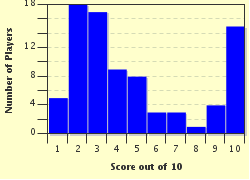Quiz Answer Key and Fun Facts
1. First off, who was it who coined this term -- "The Silk Road"?
2. What Roman writer inveighed against Roman matrons' taste for diaphanous silk garments imported at great cost?
3. Everyone knows that silk went westward from China along the Silk Road. But what Mediterranean product went the other direction and was prized in China?
4. What trading people dominated the middle section of the Silk Road during the early Middle Ages?
5. The Tocharian language was spoken in several communities along the Silk Road, especially Kucha and Yanqi in what is now northwestern China. After analysis of ancient documents by modern linguists, what languages was Tocharian found to be most closely related to?
6. This cosmopolitan Chinese capital city of the Tang Dynasty is usually considered to have been the eastern terminus of the Silk Road.
7. Which of these religions did NOT spread along the Silk Road?
8. After Marco Polo, who may or may not have gotten all the way to China, the second most famous traveler on the Silk Road is probably Xuanzang. But what exactly is this guy famous for, anyway?
9. During the reign of the Emperor Justinian in the mid-6th century, a party of monks is said to have smuggled silkworm eggs out of China so that true silk could be produced in the Byzantine Empire. In the great historian Edward Gibbon's retelling of this tale, how did these intrepid agents get their precious cargo past the alert Chinese border guards?
10. The (admittedly limited) archaeological and epigraphic evidence indicates that trade on the Silk Road was small-scale and mostly local.
Source: Author
Guiguzi
This quiz was reviewed by FunTrivia editor
bloomsby before going online.
Any errors found in FunTrivia content are routinely corrected through our feedback system.

